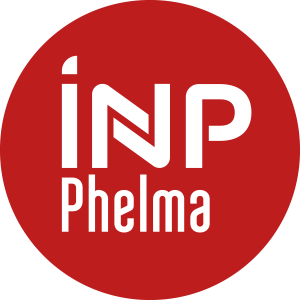Number of hours
- Lectures 12.0
- Projects 0
- Tutorials 12.0
- Internship 0
- Laboratory works 16.0
ECTS
ECTS 2.0
Goal(s)
The objective of this course is to know the basic techniques for designing communicating circuits .
More specifically, it is :
- Know the coding and RF modulation formats
- Know how to estimate and measure the quality of a digital signal , namely to qualify this quality regarding the different modulation formats
- Understand the role of the different blocks of a transmission chain, namely estimate their impact on the quality of the digital signal to better understand how to optimize the global chain
- Know and be able to implement the main access protocols and data link
- Know the principle of network operation
The practical sessions will illustrate the practice course .
Contact Yannis LE GUENNEC, Ghislaine MAURY, Laurent AUBARDContent(s)
Presentation of the main communication standards (with coding / modulation and access techniques) Ethernet, GSM, UMTS, LTE, WiFi, UWB ...
Reliability of data transfers:
- Codes detecting and correcting errors, hardware or software implementation
- ARQ protocols Automatic Repeat reQuest "(numbering, time, windows protocols)
Addressing machines and address layers (MAC and IP addresses ...), address research protocols
Practical work
The basic concepts of spectral analysis will be illustrated in this tutorial. Reference systems used for communication baseband and carrier frequency will be discussed. This lab module will allow the handling of communication systems simulation tool Simulink (Matworks) widely used in R & D.
- TP 1. SIML1 lines Codes in SIMULINK
Comparison of multiple code lines, spectral efficiency, ease of synchronization, Nyquist filtering - TP 2. SIML2 simulations under SIMULINK. Performance evaluation codes, eye diagram, bit error rate, the differential encoding performance.
- TP 3. SIML3 nsimulations under SIMULINK. digital modulations on carrier frequency in Simulink (QPSK, 16QAM) radio context, structures of modulators and demodulators, concept of complex envelope, comparison of bit error rate curves for different modulation QAM, differential demodulation, non-coherent demodulation.
Prerequisites
Basics in digital modulation techniques, signal processing
written examination (WE) (2h) with courses and authorized documents
Bonus for the participation to MCQ (Multiple Choices Questions)
Practical work (Lab) : report of TP and evaluation of student participation during the sessions.
NF=(2/3*EE+1/3*Lab)
2eme session : EE et remplacement de la note d'examen
- M. Joindot, A. Glavieux, Introduction aux communications numériques. Collection Sciences Sup, Dunod, 2007.
- A. Tanenbaum, D. Wetherall, Réseaux 5e edition, Pearson Education, 2011.



